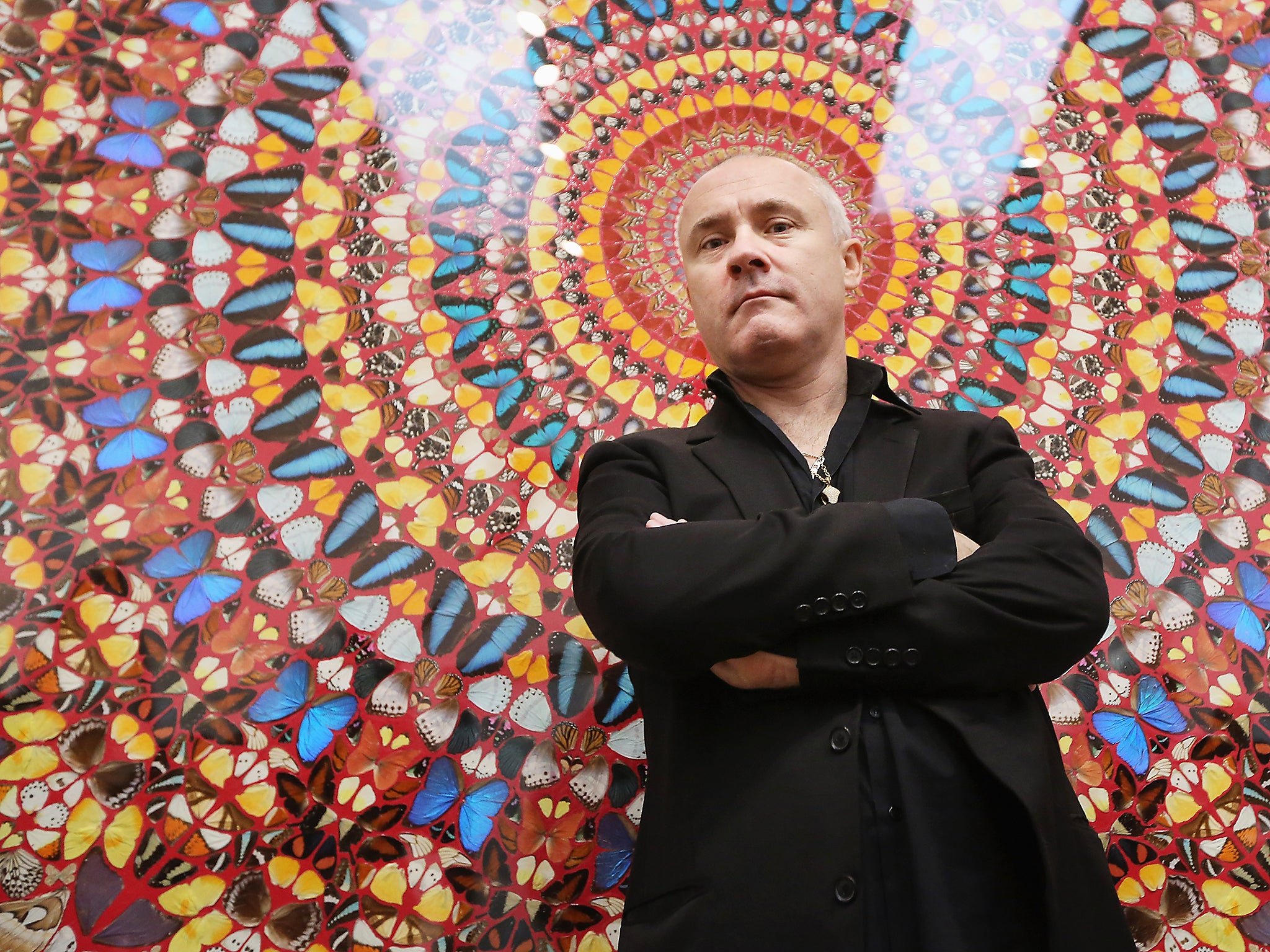Damien Hirst collectors lose thousands as expert calls plummeting value 'a bloodbath'
Controversial artist dubbed a 'marketing genius' was apparently less of an investment than collectors first thought

Your support helps us to tell the story
From reproductive rights to climate change to Big Tech, The Independent is on the ground when the story is developing. Whether it's investigating the financials of Elon Musk's pro-Trump PAC or producing our latest documentary, 'The A Word', which shines a light on the American women fighting for reproductive rights, we know how important it is to parse out the facts from the messaging.
At such a critical moment in US history, we need reporters on the ground. Your donation allows us to keep sending journalists to speak to both sides of the story.
The Independent is trusted by Americans across the entire political spectrum. And unlike many other quality news outlets, we choose not to lock Americans out of our reporting and analysis with paywalls. We believe quality journalism should be available to everyone, paid for by those who can afford it.
Your support makes all the difference.Artworks by Damien Hirst have reportedly plummeted in value since he shattered the world record for an auction sale in 2008.
The Beautiful Inside My Head auction raised a whopping £111m for the artist over two days, even as the financial markets collapsed amid the subprime mortgage scandal.
Artworks are often bought by collectors as long-term investments, with the hope that they will increase in value over time as the artist's reputation grows.
However, experts at website Artnet have discovered that 17 of the 19 Hirst works sold since the 2008 auction have actually depreciated in value, with a total loss of around £2.2m.
A painting of a skull titled Beautiful Mider sold for £670,000 in 2008, but was sold last year for £449,000. The Times notes that the loss for the seller will have been worse due to buyer's premium, seller's fees and storage costs.
Tim Schneider of Artnet said it was not a case of one or two works dragging down the average worth. "Instead of a formaldehyde tank, the best fluid measure here is a bloodbath," he wrote. "Is this grim total just a matter of a few horrendous results pulling down the rest of the group by association? Individual results thunder back a loud 'no'."
Art economist and author Don Thompson said it was unlikely that collectors who bought Hirst's work as an investment would ever recoup the money they spent. "The value of his traditional work, taxidermy animals, spot paintings, spin paintings, probably peaked with the auction," he said.
Art specialist Philip Hook warned collectors back in 2013 that the "bubble" maintained by Hirst's PR machine would eventually burst.
Speaking at the Cheltenham Literature Festival he said: "An artist who is simply very good at playing the market and is good at marketing himself, he is the most in danger of [his art] suffering when he dies," he said.
"Those works that are less aggressively presented to the public will last."
Join our commenting forum
Join thought-provoking conversations, follow other Independent readers and see their replies
Comments